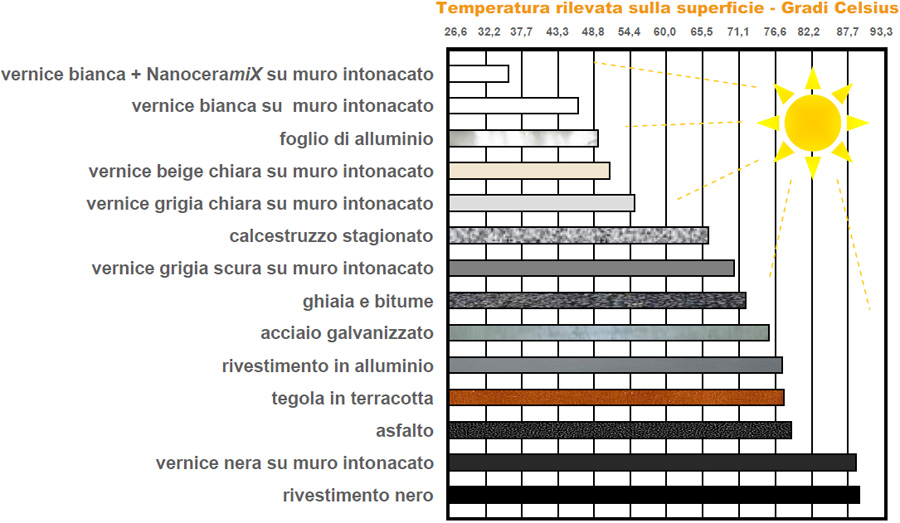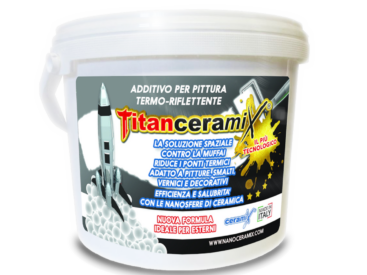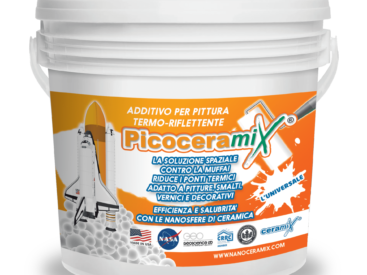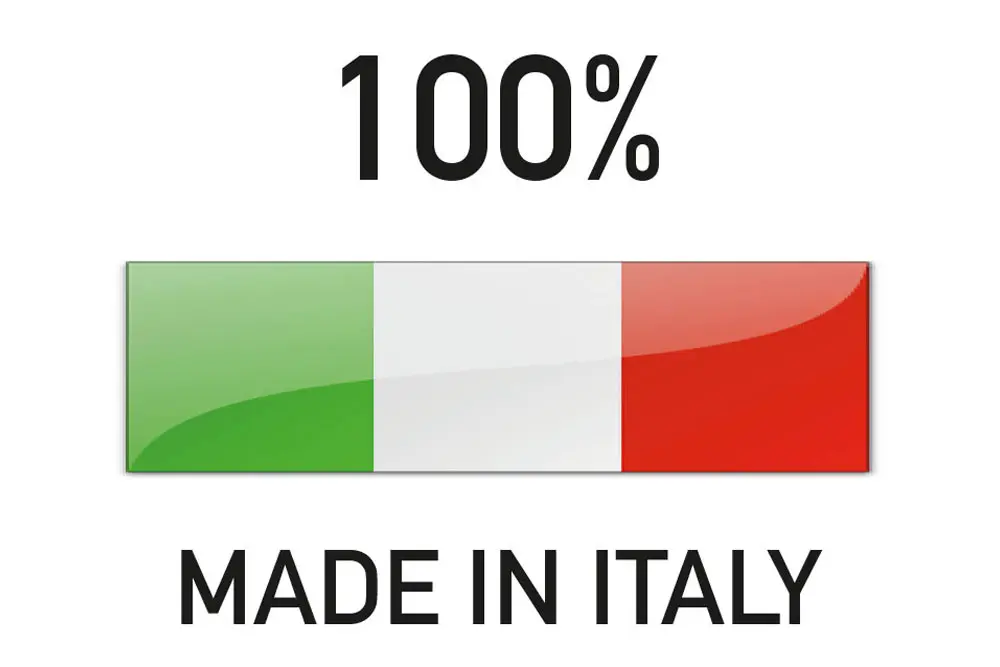The color of the painting and its effects from the energetic point of view
In fact, dark colors absorb much more radiant energy from sunlight, heating the wall and increasing internal temperatures.
This phenomenon occurs only with solar radiation (visible light) and not with internal heat (infrared radiation), as the hue of the coloring does not interact with infrared rays.
As a result, when using dark rather than light colors, increases in air-conditioning costs may occur in hot months.
But that doesn’t mean you have to avoid the use of dark colors!
Nanoceramix makes even the lightest colors more energy efficient, because it further improves the reflection values.
Nanoceramix is useful not only to make paints more energy efficient during the summer season, but also to reduce the dispersion of internal heat during the winter season, making every home or business more comfortable.
Nanoceramix interacts with both visible light (radiant heat of the sun) and infrared radiation (radiant heat of stoves and radiators).
Nanoceramix, applied externally on homes or commercial and industrial buildings, increases energy efficiency with any paint color!
Nanoceramix reduces energy consumption costs by increasing the efficiency of used paints, whatever the colour. It reduces the amount of heat entering through the roof and walls, regardless of the color.
So, even if dark colors are used, Nanoceramix will help to contain energy savings.
Here is an experiment that demonstrates the thermal behavior of materials of different colors exposed to a particularly torrid climate, that of Texas.
Temperatures reached by coatings and other materials of different colours exposed to sunlight
- Location: Texas Central
- Month: August
- Exposure time: 6 hours
- Ambient temperature: 32 º C
- Atmospheric conditions: clear sky

Conclusions
Measurements show that under intense exposure to the radiant heat generated by the sun, lighter and lighter colored materials reach lower temperatures.
Very dark materials and coatings can also touch the 100º C! We note that the most “cool” coating is the common white paint, which brought its temperature around 46 C.
The addition of Nanoceramix to this same varnish, made the thermometer stop at about 36 º C, 10 degrees less than the same coating without nanospheres!














